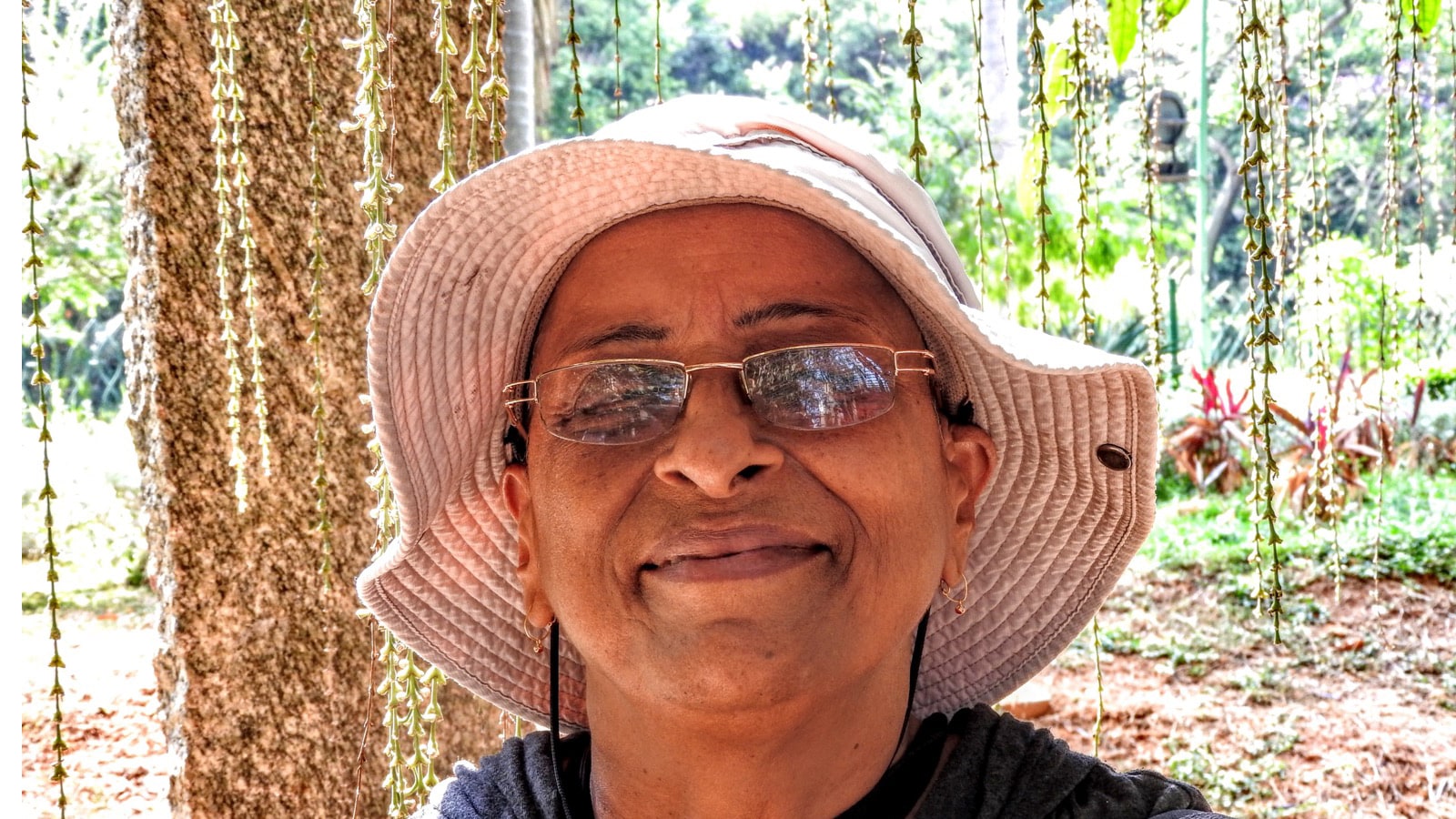Every good city needs a generous birding guide, one who is empathetic and loves to explore nature around her. If this intrepid explorer is empathetic, generous and inclusive, that’s even better. Deepa Mohan is one such wildlife enthusiast and explorer in Bangalore, India. In this podcast, we discuss the many aspects of Deepa’s birding all over India, about how to count birds, about going to the same location many times and some of her favourite birding areas in India. Some of the locations Deepa mentioned in an around Bangalore: Hoskote Lake, Begur Lake, Bannerghatta National Park, Bannerghatta biosphere, Ankasamudra, Eagle Nest, Talle Valley, Arunachal Pradesh, Jaipurdoddi, Manipal, Western Ghats. Unusual species include over-wintering birds, vagrant species such as black-capped kingfisher, a blue throat wintering in Anekal Lake, a Demoiselle Crane, a dark sided flycatcher in Nandi Hills. The location that Deepa mentions early in the podcast– the one she took me to in the morning, is Muninagara Kere. Her ebird checklist from that outing is here.
When we asked Bangalore-based, experienced birder, Deepa Mohan to provide a bio, this is what she sent. It is typical of her understated humour. “Deepa Mohan, age 66, Carnatic musician, theatre reviewer and quiz buff, turned into an avid amateur naturalist and bird watcher. Loves writing about the outings and her experiences.”
Episode Highlights:
4:30 List of lesser known birding locations in India.
6:00 An introduction to ebird from the point of view of a birder.
7:30 How to choose where and when to go for birding trips
8:30 For someone from abroad, where can you go birding in Bangalore? She mentions DevarayanaDurga.
10:00 The art of seeing nature. She mentions Jungle Lodges and S. Karthikeyan whose journal here is quite wonderful.
12:50 The pleasures of raptors versus passerines versus waterbirds.
On March 18th, 2021, Deepa wrote a lovely post in the closed group called Bngbirds, or Bangalore birds, which we reproduce below. For more of Deepa’s writing, please visit her website, on wordpress here and livejournal here. Her email, given with her permission is [email protected].
I am often asked, by those who join the walks I conduct, why I keep going to a location again and again. “We know it’s interesting for us to come there for the first time,” is the question, “but doesn’t it get boring for you?”
My answer can be summed up in one word of two letters…”No”!
There are many positive reasons for my negative response, and here are some of them.
1. Some things are never the same.
It may be a different season of the year, a different time of day, a slightly different location. For example, I go to more than eight locations in the Bannerghatta biosphere, or visit two different sides of Anekal or Hoskote Lake. The birds and the flora that I see, may differ on each occasion.
2. Some things are the same.
Repeated visits over a short period of time results in familiarity with the terrain, and the local flora and fauna. In fact, this familiarity can sometimes extend to individual birds and plants. For example, I was able to identify, from a friend’s photograph, a couple of Wood Sandpipers which I call “the married couple”…they stay together but are scrapping all the time!) from Anekal Doddkere. I have a particular place at the Ragihall sheet rock where, in season, I will find a rare orchid (Vanda spathulata). I know that there is a resident Short-toed Snake Eagle at T K Falls…and so it goes.
3. Some people in the group are the same.
It’s great fun to go with people to the same location and see what’s different, and what’s the same, from the previous visit. More sets of eyes generally result in more sightings, sometimes of birds which are rare or not seen commonly. Sometimes it could be a learning about bird behaviour, like watching a Purple Sunbird repeatedly take spiderweb silk, or several birds nectaring on Palash or Red Silk-cotton trees.
4. Some people in the group are different.
Going with different people has been of immense benefit to me. Different perspectives and ideas result in my adding to my store of information and knowledge. I may look at a plant and admire its blooms, and be told that it is the host plant for a butterfly (eg, the Cipadessa baccifera or Ranabili with its beautiful berries, is the host plant for one of the largest moths in the world…the Atlas moth).
5.The secondary experiences are the same.
I have, over the years, made friends with many of the people who live in the locations I visit, and I like visiting them and keeping in touch; they often give me information about the local flora and fauna. For example, Saraswathi, Aswath, or Nagesh who live in Ragihalli keep me updated about the elephant situation, as also the water situation in the area.
6. The secondary experiences are different.
As a group, we may discover a new area that we have not touched before, or find things, large or small, that are new to all of us. We may talk to some new people who live in the area, and get different insights into life there. I visited Manjunath’s home in Ragihalli while having our post-birding breakfast and saw the beautiful Varalakshmi puja which he and his wife Suguna had put up. I saw the Devi temple come up at Muthanallur lake, and the priest told me a lot about the deity, including the fact that the site of the temple was specially chosen to be near the ancient Mahua (Madhuca longifolia) tree.
Well…for all these reasons, and more, I am as happy to revisit a nature location as I am to go to a new one! This probably explains my seven visits to Arunachal Pradesh or my sixth visit to Satpura in Madhya Pradesh!
Cheers, Deepa.



Wonderful! An inspiration for the easily bored as well as curious minded ones
I love bird watching and feel I am a complete dud at it. I have been looking and looking and looking for someone who has the patience to teach me. Thanks for this published article.
Great podcast and informative, would love to get more of the same.